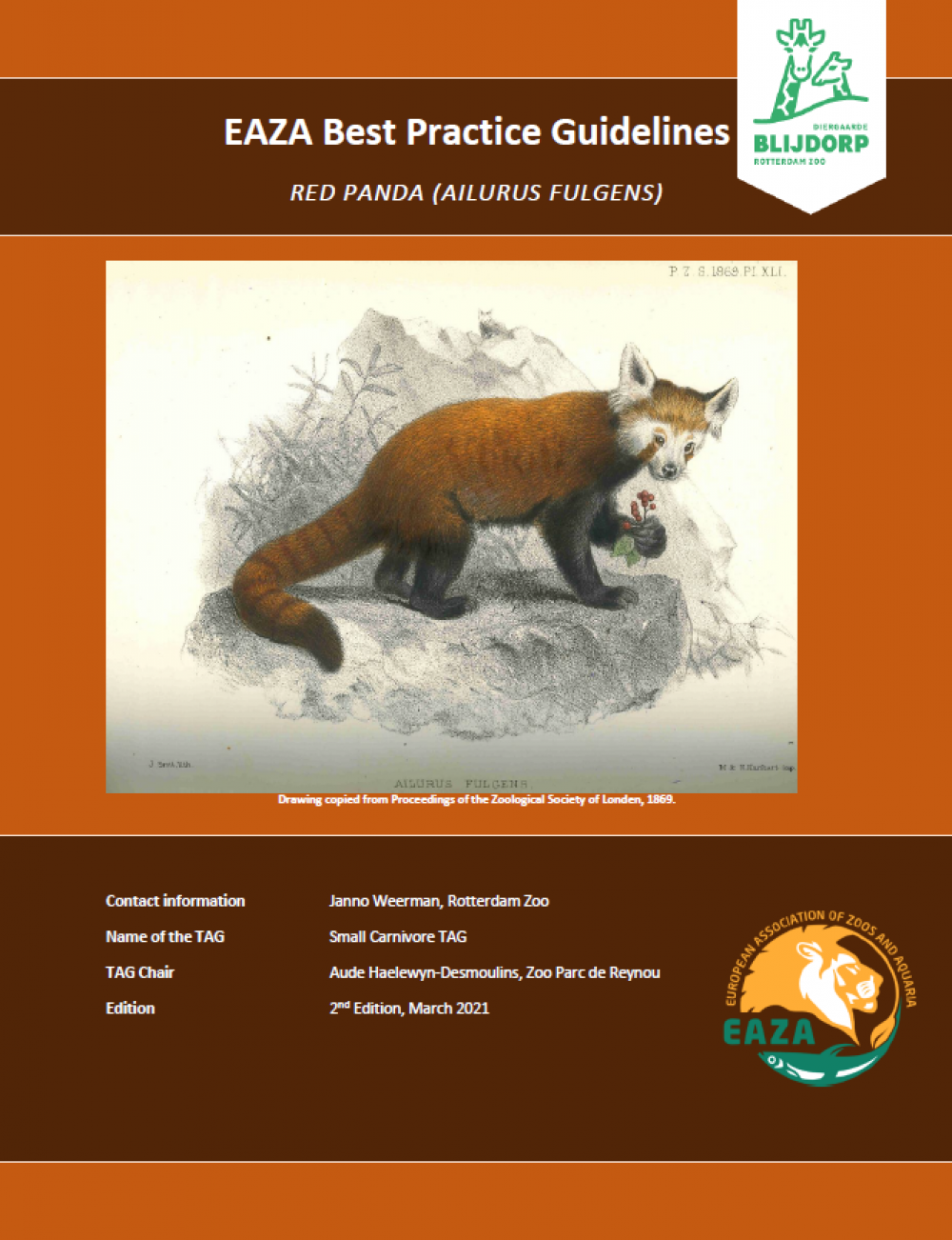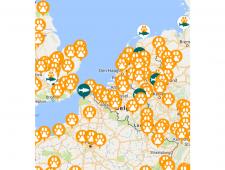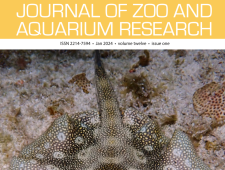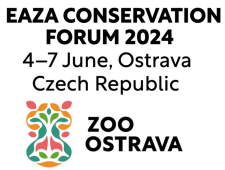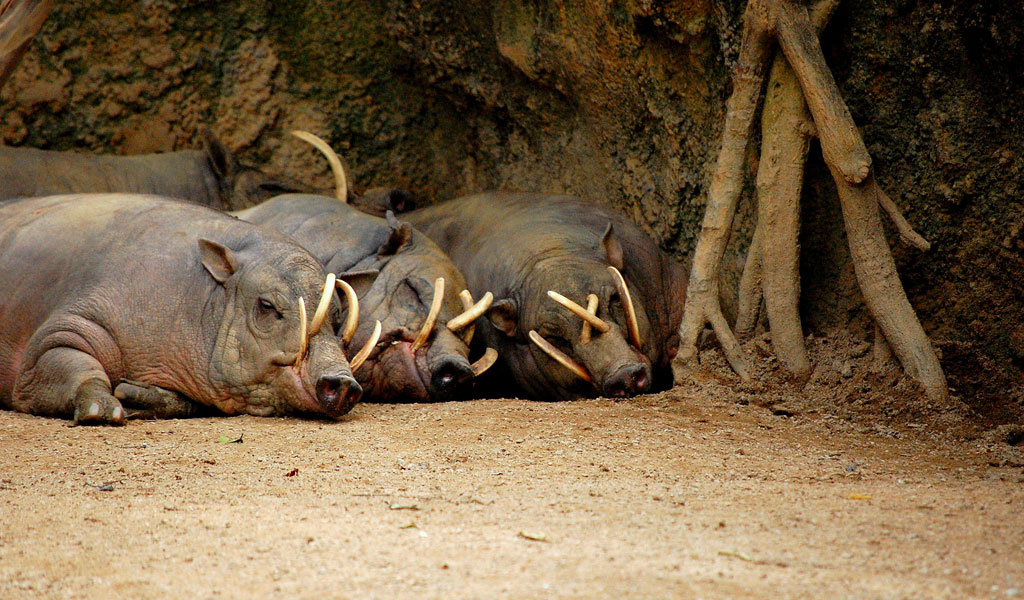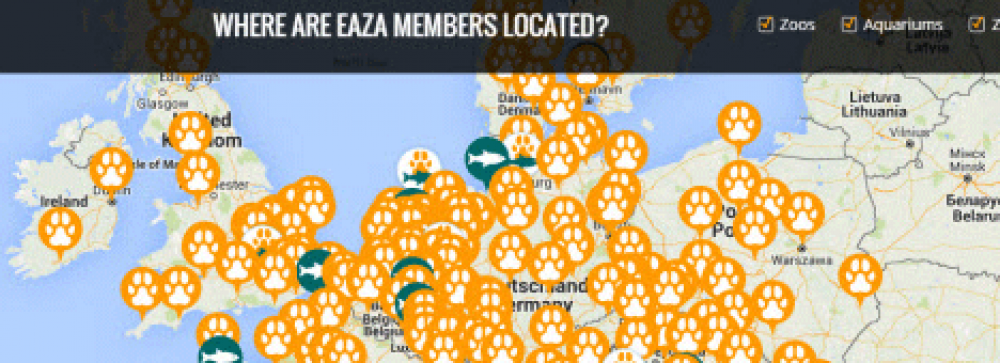EAZA’s new population management structure
The world is continuing to experience rapid losses of species and populations and many of the extant populations are undergoing significant declines and are becoming increasingly small and fragmented. A growing number of species can thus be expected to require intensive management of individuals and populations alongside other conservation actions to ensure their long term persistence.
|
To help facilitate a more integrated approach to conservation, the Conservation Planning Specialist Group (CPSG) of the Species Survival Commission (SSC) of the International Union for Conservation of Nature (IUCN) has coined the “One Plan Approach” (OPA) to species conservation planning: “the joint development of management strategies and conservation actions for all populations of a species by all responsible parties to produce a single, comprehensive conservation plan for a species” (Byers et al., 2013). Simultaneously, IUCN SSC published its “Guidelines on the Use of Ex situ Management for Species Conservation”, designed to help conservationists evaluate if, when and how ex situ management would be a valuable component of the overall conservation strategy for a particular taxon. |
Following the spirit of the One Plan Approach (OPA) to species conservation planning and the IUCN SSC ‘Guidelines on the Use of Ex situ Management for Species Conservation’ and in order to appropriately reflect the current breadth of population management activities, the needs of EAZA Members and the changes and opportunities within the conservation world at large, EAZA implemented a new Population Management Structure in January 2018, following a thorough and holistic evaluation of EAZA’s former population management structures. For the coming five years the EAZA community is in transition to fully implement the new Population Management structure.
The new EAZA Population Management Structure is built around three main pillars: 1) Regional Collection plans, 2) EAZA Ex situ programme application and 3) Long term management plans.
EAZA Ex situ Programme Structure
Taxon Advisory Groups, Regional Collection Plans, EAZA Ex situ programmes and Long term management plans
The new EAZA Ex situ Programme Structure was developed so that Taxon Advisory Groups (TAG) when producing the Regional Collection Plan (RCP)s more precisely and more consciously evaluate which conservation and/or non-conservation roles are appropriate for which taxon, and so that the Long Term Management Plans (LTMPs) investigate in more detail which genetic and demographic goals are best linked to the assigned roles and the situational circumstances of the taxon. Whereas developing (non)-breeding and transfer recommendations has traditionally received relatively more attention, other elements will see increased focus in addition to these recommendations, such as jointly developing strategies for socio-behavioural management, education, veterinary issues, banking, data gathering and research.
TAGs and Regional collection plans
EAZA Taxon Advisory Groups (TAG) are at the heart of the EAZA Population Management Structure.
In the spirit of the One Plan Approach and through the application of the 5-STEP decision making process in the IUCN Guidelines on the Use of Ex situ Management for Species Conservation, TAGs decide which species are recommended to be managed under an EAZA Ex situ Programme (EEP) and what the precise direct, and/or indirect, and/or non-conservation roles of each EEP will be meaning for the taxa under its umbrella. The information is collected in the Regional Collection plan (RCP). TAG members are professional zoo and aquarium people who work in EAZA member institutions and have specialist knowledge and a keen interest in the group of species covered by the specific TAG. People who work at universities or for international conservation organisations act as TAG advisors on issues such as nutrition, health and conservation. Another important task of the TAGs is the coordination of the production of EAZA Best Practice Guidelines (BPG) for the managed taxa under the TAG’s umbrella.
Click on the infographics "Diving Into Regional Collection Planning" for a practical example.
EAZA Ex situ programmes (EEP) and EAZA Ex situ programmes application
EEPs are defined as population management activities that are endorsed by EAZA for species that are managed by EAZA Members aiming towards (maintaining) healthy populations of healthy animals within EAZA or beyond. For species that are not considered for active management, the TAG monitors the population trend. For each new EEP that is recommended in an RCP, in the following a serious of questions concerning the envisaged participants, governance and general biological characteristics of the EEP that guide the TAG to make conscious decisions, rather than automatic assumptions, is discussed by the TAG. The decisions are captured in an EEP application leading to tailor made EEPs fully focused on the species needs, aiming towards (maintaining) healthy populations of healthy animals within EAZA and beyond.
Click on the infographics "What's an EEP?" for a practical example. The infographics are also available in Polish and German, thanks to Warsaw Zoo and Neuwied Zoo. Feel free to use them.
European Studbooks
The ESB (European Studbook) is less intensive than the EEP programme. The studbook keeper who is responsible for a certain ESB collects all the data on births, deaths, transfers, etc., from all the EAZA zoos and aquariums that keep the species in question. These data are entered in special computer software programmes, which allow the studbook keeper to carry out analyses of the population of that species. EAZA zoos may ask the studbook keepers for recommendations on breeding or transfers. By collecting and analysing all the relevant information on the species, the studbook keeper can judge if it is doing well in EAZA zoos and aquariums, or if maybe a more rigid management is needed to maintain a healthy population over the long term. In that case, the studbook keeper may propose that the species be managed as an EEP programme.
EAZA Population Management Manual
EAZA has put together all relevant policies, guidelines, statements and rules regarding breeding programme management in one concise document: the EAZA Population Management Manual. This document is a strong tool for EAZA’s management of species and provides the breeding programme managers with all relevant background information as well as templates and forms to ensure high quality of breeding programme management.
Long term management plans
At regular intervals a LTMP is produced for every established EEP. Following from the precise role(s) and very general biological characteristics of the EEP as defined in the RCP, the LTMP more precisely define the long term genetic and demographic goals for the programme and stipulates an action plan with all the strategies and activities (e.g. demographic and genetic management, behavioural management, veterinary protocols, welfare science, data collection and research, education aspects, in situ support, etc.) to be implemented in a defined time period in order for the EEP to stay on target in reaching its roles and goals as defined in the RCP.
|
For the management of EEPs and the sharing of knowledge within EAZA and beyond EAZA Members make use of Species360 ZIMS (Zoological Information Management Software). This fully web-based application connects to a global database to enable real-time management of institutional and animal records world wild. The included studbook software allows for the proper management of EEPs in line with the defined long term genetic and demographic goals for the EEP. |
Exchange of Animals
EAZA Ex situ programmes (EEP) aim at conserving healthy populations of animals in captivity. The acquisition of new animals and the regular exchange of animals between and beyond EAZA Members is essential when realizing healthy, demographically and genetically sustainable, populations.
In essence all animals in the EAZA collection should come from a trustworthy source and accompanied by all relevant legislative paperwork. All EAZA members will endeavour to ensure that animals acquired are, if possible, born in captivity. This is best achieved by direct zoo to zoo contact, but does not preclude the receipt of animals resulting from confiscation or rescues. Where captive bred animals are acquired, care should will be taken on the origin of these animals (amongst others rearing method and breeding techniques used). Any details of health, diet/nutrition, reproductive and genetic status and behaviour that might affect management of an animal being transferred (or other animals in the group at the receiving institution) should be disclosed at the commencement of negotiations.
Transfers of programme animals are always dealt with via the relevant coordinator of that specific breeding programme to make sure they contribute to the overall goals and roles of the respective EEP.
Although EAZA works in the spirit that all animals acquired are born in captivity, EAZA recognises that there is a legitimate need for conservation breeding programmes, education programmes or basic biological studies, to obtain animals from the wild. Where wild caught animals are acquired EAZA Members are encouraged to carry out a thorough analysis, considering amongst other factors the effect their action has on the origin of these animals and the wild population. EAZA Members hereby make use of the knowledge gathered by the EAZA Community and recognised external experts. These acquisitions should aim to build up and maintain healthy, demographically and genetically sustainable, populations in the EAZA regions. All animals leaving the collection should go to appropriate facilities with professional standards (as skilled staff who are capable of maintaining an appropriate standard of husbandry and welfare.
When transporting animals EAZA Members operate conform to the international standards and national and international regulations applying to the particular species. By completing transfers, themselves or via specialist and well recommended companies EAZA Members ensure an appropriate standard of welfare of the animals is guaranteed during transport.
Best Practice Guidelines
EAZA Best Practice Guidelines are produced by the various TAGs to merge expert husbandry knowledge and make it widely available within and outside the borders of the EAZA community. The guidelines displayed below show best practice standards, which EAZA zoos aim at achieving. They have been compiled using a template and made user-friendly to facilitate reading and the finding of necessary information.
The guidelines are of particular interest when building new enclosures, when deciding upon the nutrition of animals or when seeking information on the biology of the species. EAZA members strive to house animals adequately to their needs and to give advice where needed to help further animal welfare. Please also view the EAZA Standards for the Accommodation and Care of Animals in Zoos and Aquaria.
See below the EAZA Best Practice Guidelines currently available.
General guidelines:
- NEW! Animal training Guidelines
- NEW! (Czech) Animal training Guidelines
- NEW! (Spanish) Animal training Guidelines
Invertebrates:
- Desertas Wolf Spider (Hogna ingens)
- NEW Dragon-headed katydid (Eumegaladon blanchardi)
- Montserrat Tarantula (Cyrtopholis femoralis)
- Noble chafer (Gnorimus nobilis)
- Polynesian tree snails (Partula spp)
Aquatic non-mammal species:
Amphibians:
- Midwife toad (Alytes sp.)
- Mountain chicken frog (Leptodactylus fallax)
- NEW! Lake Oku frog (Xenopus longipes)
- Lake Patzcuaro salamander (Ambystoma dumerilii)
- Fire salamander (Salamandra Salamandra, incl. S. s. terrestris)
- Sardinian brook salamander (Euproctus platycephalus)
- NEW! Black-eyed leaf frog (Agalychnis moreletii)
-
Potomotyphlus and Typhlonectid caecilians (incl. T. compressicauda, T. natans and P. kaupii)
Reptiles:
- Ploughshare tortoise (Astrochelys yniphora)
- European pond turtle (Emys orbicularis)
- Egyptian tortoise (Testudo kleinmanni)
- Sea turtles (Cheloniidae)
- Sand lizard (Lacerta agilis)
- Crocodile monitor (Varanus salvadorii)
- NEW! Lesser Antillean iguana (Iguana delicatissima)
Birds:
- Vietnam Pheasant (Lophura edwardsi)
- Turacos (Musophagidae)
- Red-Crested Turaco (Tauraco erythrolophus)
- Ecuadorian Amazon Parrot (Amazona lilacina)
- EAZA Reference Document - Virus Management for Parrots
- Javan Green Magpie (Cissa thalassina)
- Rufous-fronted Laughingthrush (Garrulax rufifrons)
- Straw-headed bulbul (Pycnonotus zeylanicus)
- Sumatran Laughingthrush (Garrulax bicolor)
- Husbandry and Management Guidelines for Demonstration Birds
- Parrot supplement to the Bird Demonstration Guidelines
- (Spanish) Manual de Buenas Practicas de EAZA para Demostraciones con Aves Rapaces
- NEW! Cinereous vulture (Aegypius monachus)
- NEW! Mount Omei Liocichla (Liocichla omeiensis)
Mammals
Primates:
- Capuchin monkeys (Sapajus and Cebus sp.)
- Callitrichidae
- White-faced saki monkey (Pithecia pithecia)
- De Brazza's monkey (Cercopithecus neglectus)
- Mangabey (Cercocebus spp., Lophocebus spp. and Rungwecebus spp.)
- Gelada baboon (Theropithecus gelada)
- Gorilla (Gorilla gorilla gorilla)
- Orangutan (Pongo sp.)
- Bonobo (Pan paniscus)
- Chimpanzee (Pan Troglodytes)
- NEW! Slow loris (Nycticebus)
- NEW! Sifaka (Propithecus coronatus and Propithecus coquereli)
Carnivores:
- Asiatic golden cat (Catopuma temminckii)
- Cheetah (Acinonyx jubatus)
- Demonstration Guidelines for felid species used in public demonstrations
- Dhole (Cuon alpinus)
- European otter (Lutra lutra)
- Red Panda (Ailurus fulgens)
- Jaguar (Panthera onca)
Marine species:
- Antillean manatee (Trichechus manatus manatus)
- Pinnipeds (Otariidae and Phocidae)
- Marine Mammal Demonstration and Public Interaction Guidelines
Ungulates:
- Greater one-horned rhinoceros (Rhinoceros unicornis)
- White rhinoceros (Ceratotherium simum)
- Black rhinoceros (Diceros bicornis) 2nd Edition
- Babirusa (Babyrousa)
- Pygmy hippopotamus (Choeropsis liberiensis)
- Burmese brow antlered deer (Rucervus eldii thamin)
- Tufted deer (Elaphodus cephalophus)
- Lesser kudu (Tragelaphus imberbis)
- NEW! Okapi (Okapia Johnstoni)
- Elephants (Elephantidae)
Other mammals:
